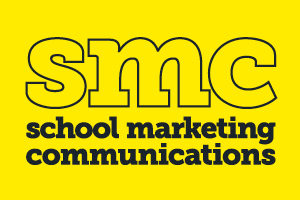Look no further, this is your ultimate guide to navigating the social ecosystem. Okay it’s really just scratching the surface but it will give you a good grounding so you feel confident to face the book (ah thank you).
Here is a rundown of how to approach Facebook, Twitter and LinkedIn for your school’s marketing. Read on for the ultimate social media cheat sheet for schools.
First things first … why social?
Don’t just jump on the tweeting bandwagon because everyone’s doing it. Social media should fit into your marketing plan like any other channel and have a clear strategy and target audience. Define your audience, find out where they spend time online and what they do there. This will help you to outline your social media strategy and objectives. Don’t forget ROI — how will you measure success? This should all be outlined in a strategy document to justify your social media activity.
Where and when?
It’s tempting to be on Facebook, Twitter, LinkedIn and Instagram (some schools have even bravely attempted Snapchat). But unless you have a reason to be on the platform I wouldn’t even create a school profile. Our advice is, if you have limited time to devote to this, pick one platform that gives you the most exposure to your audience and suits your objectives — and do it well. It’s also worth finding out the best times to post on each platform and there are many resources to help you work this out. Consider using scheduling tools such as Hootsuite or Tweetdeck to schedule posts ahead of time (you can schedule directly in Facebook but not in Twitter or LinkedIn).
Tone of voice, writing style and crisis management
This step is often missed but so important. Include a section in your social media strategy that talks about your school brand’s tone of voice and other details such as writing style and how to handle a crisis situation. This will instruct your staff on how to communicate on behalf of your school, no matter what the context. Tone of voice should articulate your brand qualities. For example, should you sound warm, corporate, cheeky, knowledgeable, trustworthy, approachable or compassionate? Other details to consider include whether the school name can be written as an acronym, shortened or always written in full. And, something every school principal dreads, what should you do if you have a social media crisis on your hands? Create a crisis management plan to refer to in these situations.
Understand the platform
To do social well, you need to understand how the platform is used. Don’t be afraid to experiment on your own personal profile to learn the features. Here are some analogies that may help:
-
- Facebook is like being in someone’s living room with their close friends and family. Be personal, entertaining or humorous. Tell compelling stories with great content.
- Twitter is like being at a smart cocktail party. Make interesting but intelligent conversation. It’s okay to speak often (three to four times a day).
- LinkedIn is like being in a board meeting. Always be professional and knowledgeable in your area. Make insightful, intelligent and appropriate conversation.
Some great resources to consider include Canva for designing social media graphics, Hootsuite for scheduling posts and this book to learn how to master social media completely.






